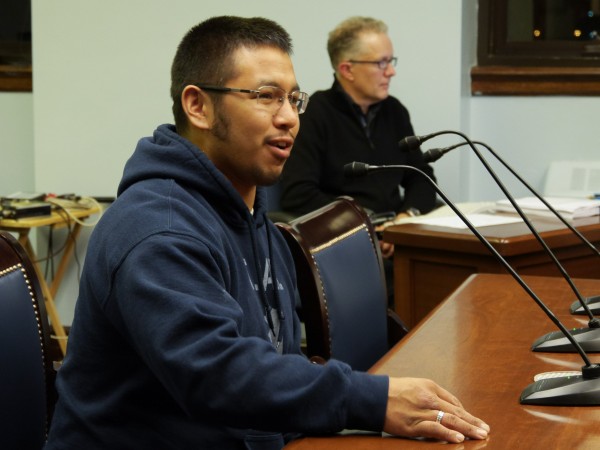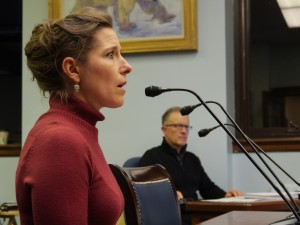Alaskans don’t want to see large cuts to their annual Permanent Fund dividends. At least, that was the message most people delivered Thursday night about Gov. Bill Walker’s plan for the fund.

The Senate State Affairs Committee heard public testimony from across Alaska on Senate Bill 128.
Deering resident Kevin Moto said local businesses allow residents to make payments based on future dividends.
“In rural Alaska, the dividend contributes to the economy,” Moto said. “And I think by reducing the distributions, we’re creating a bigger rural-urban divide.”
Walker proposed using Permanent Fund earnings to pay for much of the state’s budget.
He would draw $3.3 billion from the fund’s earnings, as well as other state reserves.
The governor has also proposed $100 million in spending cuts.
Under Walker’s plan, the source of dividends would shift to oil and gas royalties. They’re expected to decline.

More than 100 people spoke. Another 200 submitted written comments.
Beth Fread of Palmer asked legislators to balance the budget through spending cuts.
“Some of the cuts you could make would be to eliminate the positions that are currently frozen,” Fread said. “You could utilize the tools that we used in the ‘80s, which was a wage freeze, to which the unions agreed for the good of the state. There are many ways to make cuts.”
Others who oppose cutting Permanent Fund dividends supported drawing new revenue from other sources.
Anchorage resident Tom Lakosh said he would like to spare children from dividend reductions.
“It’s clear to me that the preferred method of revenue generation would be from corporate and/or personal income so that we can spread most of this cost of our state government on those who actually make money in the state,” he said.
A minority of speakers expressed a willingness to see changes to how the state spends Permanent Fund earnings.
Kodiak resident Erin Harrington said it’s imperative that legislators act this year on the budget shortfall.
“I certainly see places for efficiency in government,” Harrington said. “But I believe that first we have to take action to stabilize our revenue sources and I think that using the Permanent Fund and adding new revenue sources is completely reasonable.”
Sen. Bill Stoltze, a Chugiak Republican and the committee chairman, said the committee would take the testimony into account as it considers what to do with the bill.
Andrew Kitchenman is the state government and politics reporter for Alaska Public Media and KTOO in Juneau. Reach him at akitchenman@alaskapublic.org.




